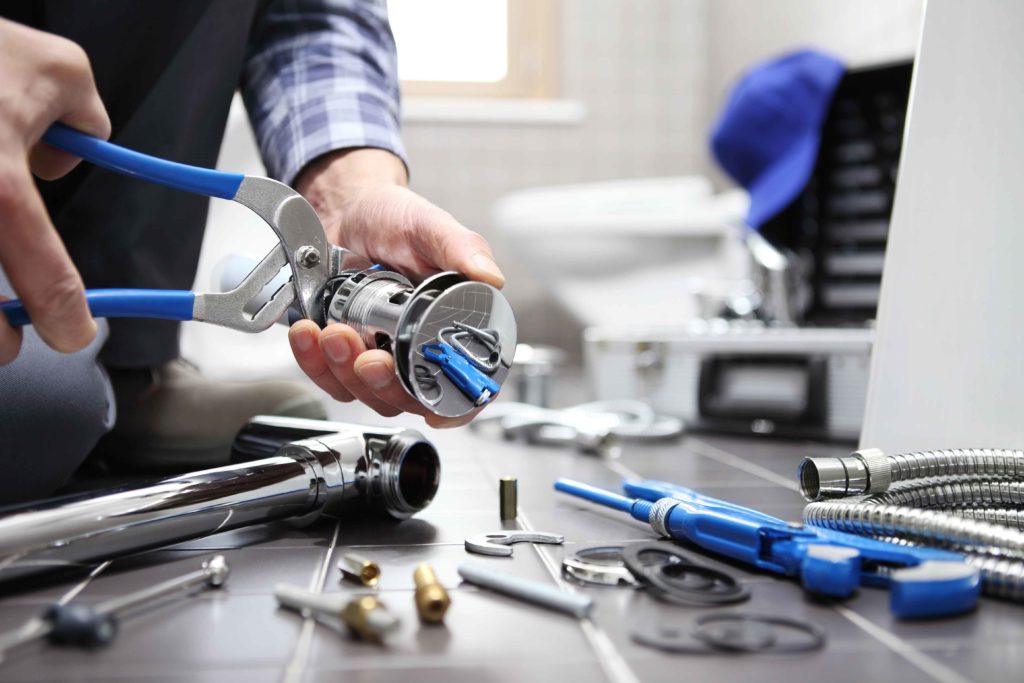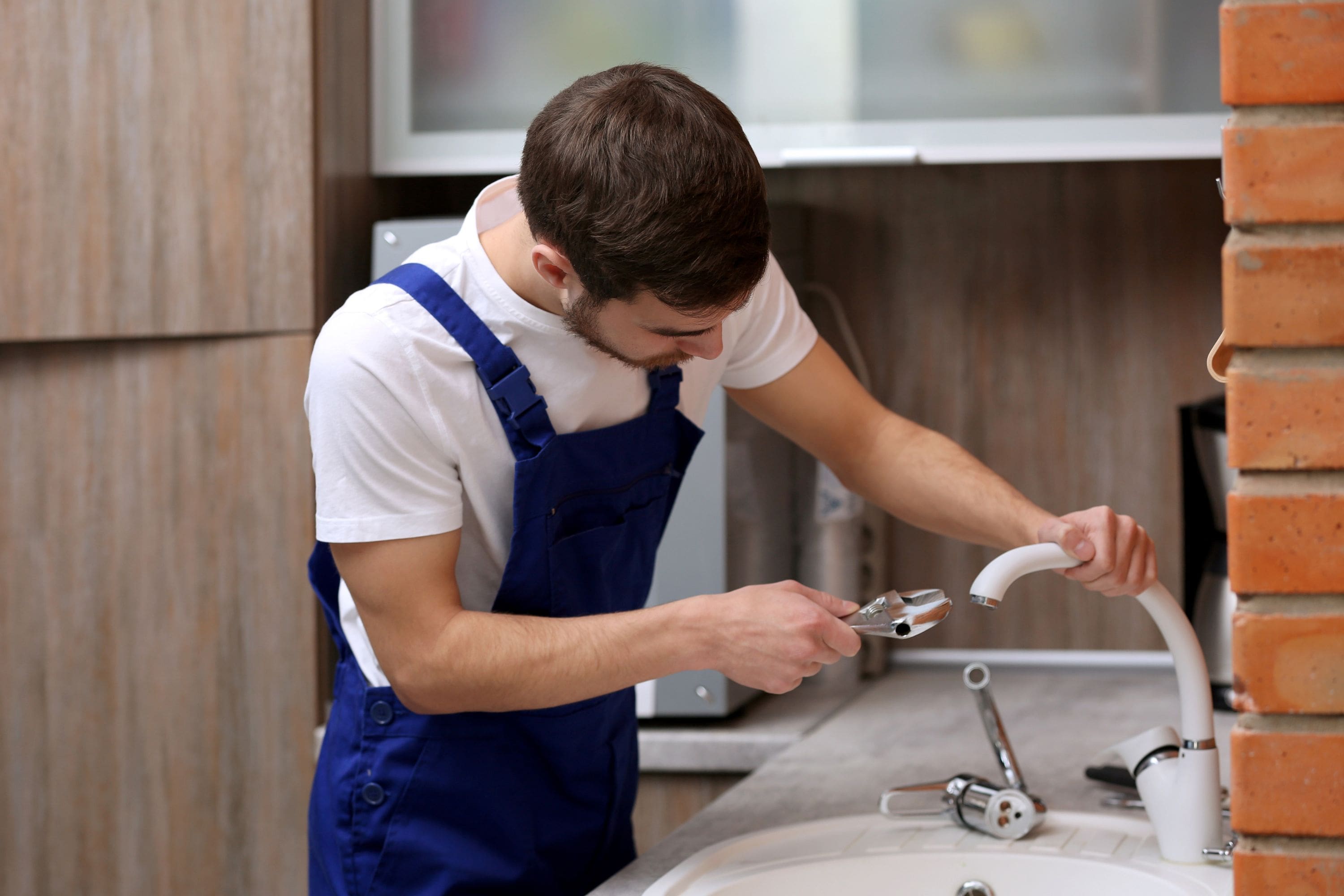How It's Mandatory to Deal with a Malfunctioning Faucet
How It's Mandatory to Deal with a Malfunctioning Faucet
Blog Article
Almost everyone seems to have their personal opinions involving What Causes Leaky Faucets & How To Fix Them.

Dripping taps might appear like a minor hassle, however their influence goes beyond just the inconvenience of the audio. From drainage to incurring unnecessary financial costs and health and wellness threats, disregarding a leaking faucet can result in different repercussions. In this post, we'll explore why it's important to address this common household problem quickly and efficiently.
Wastage of Water
Ecological Effect
Dripping taps contribute considerably to water wastefulness. According to the Epa (EPA), a single tap trickling at one drip per second can waste greater than 3,000 gallons of water per year. This not just strains water sources yet likewise influences communities and wild animals dependent on them.
Financial Prices
Boosted Water Expenses
Beyond the environmental effect, leaking faucets can blow up water costs substantially. The accumulated wastage with time converts right into higher utility expenses, which can have been stayed clear of with prompt repair services.
Prospective Residential Property Damages
Moreover, prolonged dripping can lead to damage to components and surfaces surrounding the faucet. Water buildup can create discoloration, rust, and even architectural concerns if left ignored, resulting in added repair work costs.
Wellness Issues
Mold and Mildew Growth
The constant presence of moisture from a dripping faucet develops an ideal atmosphere for mold and mold growth. These fungi not just jeopardize indoor air top quality however likewise pose wellness dangers, particularly for people with breathing conditions or allergic reactions.
Waterborne Diseases
Stationary water in dripping taps can become a breeding place for bacteria and various other pathogens, boosting the danger of waterborne conditions. Pollutants such as Legionella bacteria flourish in stagnant water, potentially resulting in major ailments when ingested or breathed in.
Do it yourself vs. Expert Repair service
Benefits and drawbacks of DIY Fixing
While some might attempt to fix a leaking tap themselves, do it yourself fixings feature their very own collection of obstacles. Without correct understanding and devices, DIY attempts can intensify the issue or lead to insufficient fixings, lengthening the issue.
Benefits of Working With a Specialist Plumber
Employing a professional plumber ensures that the underlying cause of the leaking faucet is resolved successfully. Plumbing technicians possess the expertise and devices to diagnose and repair tap concerns efficiently, conserving time and minimizing the danger of more damage.
Step-by-Step Guide to Dealing With a Dripping Faucet
Tools Needed
Prior to attempting to take care of a trickling faucet, gather the needed devices, consisting of a flexible wrench, screwdrivers, replacement parts (such as washers or cartridges), and plumber's tape.
Common Faucet Issues and Their Solutions
Recognize the sort of tap and the details concern creating the drip. Usual troubles consist of worn-out washers, corroded valve seats, or faulty O-rings. Describe manufacturer guidelines or on the internet tutorials for detailed guidance on repair services.
Preventive Measures
Normal Maintenance Tips
To prevent dripping faucets, execute regular upkeep such as cleaning aerators, evaluating for leakages, and replacing damaged components promptly. Furthermore, think about setting up water-saving devices or upgrading to extra reliable fixtures.
Significance of Prompt Repair Works
Dealing with trickling taps as soon as they're seen stops further water wastefulness and potential damages, ultimately conserving both water and money in the long run.
Influence On Property Value
Assumption of Well-Maintained Residential Property
Maintaining a residential property in good condition, including dealing with maintenance issues like dripping taps, enhances its perceived value and desirability amongst possible purchasers or renters.
Influence on Resale Worth
Qualities with well-kept plumbing fixtures, consisting of faucets, command greater resale values in the realty market. Dealing with trickling faucets can add to a positive impact during building evaluations and arrangements.
Environmental Obligation
Specific Payment to Conservation
Taking responsibility for taking care of trickling faucets lines up with wider initiatives towards water conservation and environmental sustainability. Every individual's actions jointly make a considerable impact on protecting valuable sources.
Sustainable Living Practices
By prioritizing prompt fixings and adopting water-saving practices, people add to lasting living techniques that benefit both present and future generations.
Verdict
Attending to a leaking faucet surpasses simple ease; it's an essential action towards conserving water, reducing economic expenses, and safeguarding wellness and property. Whether with DIY repair services or specialist assistance, doing something about it to deal with leaking taps is a small yet impactful method to advertise responsible stewardship of resources and contribute to a much healthier, much more lasting future.
How to Fix a Leaky Faucet: Step-by-Step Repair Guide
A leaky faucet may seem like a simple annoyance, but if it's not fixed promptly, that leak could cost hundreds to potentially thousands. From water damage to mold, mildew, and high water bills, even a tiny leak can be catastrophic if left unattended. Damage like this can even affect the overall value of your home, so it's important to take the right approach for leaky faucet repair. You may need the help of a plumber in some cases, but we've got a few tips you can try on how to fix a leaky faucet before calling the pros.
Four Faucet Types
When you're learning how to fix a leaky faucet, the first step is knowing what kind of faucet you're working with! There are four common types.
Cartridge Faucets
Cartridge faucets come in one- or two-handled varieties. In one-handled cartridge faucets, hot and cold water combines in a single cartridge. In the two-handled versions, hot and cold water are controlled separately and mixed in the faucet.
Ball Faucets
Ball faucets have a single lever you push up and down to adjust the pressure and rotate to change the temperature. A slotted metal ball controls the amount of water allowed into the spout.
Compression Washer Faucets
They're the oldest type of faucet, but they're still used in many homes — especially older ones. Compression faucets have two separate handles that, when turned, raise or lower the washer that seals a water valve. This valve stops water from flowing through the faucet when it is turned off.
Disc Faucets
Disc faucets rarely need to be repaired due to their maintenance-free design. The water flow is controlled by two discs — the upper one raises and lowers against a fixed lower disc, creating a watertight seal. If your disc faucet starts leaking, you may need to replace the seals or clean residue buildup from the inlets.
Fixing a Leaky Faucet
Step 1: Turn Off the Water
Whether you're learning how to fix a leaky bathtub faucet or how to fix a leaky kitchen faucet, always turn off the water supply to your working area when you're fixing a leak. The last thing you want is a flood added to your list of things to fix.
Look for the shutoff valves below your sink or around the tub and turn them clockwise to stop the water flow. If your faucet doesn't have shutoff valves, you may need to turn off the water for the whole house. Check to make sure it's off by turning the faucet on. If nothing comes out, you're ready to start the repair.
Step 2: Take Apart the Faucet
How you disassemble your faucet depends on the type of fixture you have. You can use a flathead screwdriver to remove the caps on top of the handle or handles for cartridge and compression faucets. Inside, you should see handle screws. Unscrew these with a screwdriver to remove the handle.
Disc- and ball-style faucets will typically have an inlet screw near the handle, and removing that will reveal the interior of the faucet.
Detach the Valve Stem
For cartridge- and compression-style faucets, you'll see the inner valve stem or cartridge once you remove the faucet handles. If you have a compression faucet, unscrew the brass valve stem. If you have a cartridge faucet, pull out the cartridge. If your cartridge has been in place for a while, it may require some tools or extra force to remove it due to mineral deposits.
Examine and Replace Parts
Once you've removed the parts, check them out to confirm what needs to be replaced. You may see corroded rubber washers, O-rings, stems, or cartridges. On a ball-style faucet, check the seats and springs for damage.
If you need to repair a leaky disc faucet, check the inlet and seals on the lower disc.
Once you determine what parts must be replaced, visit your local hardware store. Bring the damaged parts with you to ensure you can purchase the correct components to replace them.
Clean Valves and Faucet Cavity
If you've removed a stem or cartridge, you may notice mineral buildup in the faucet's threads. Use white vinegar to clean the valve seat by soaking it for a few minutes, then scrub it away with a soft toothbrush and rinse with warm water. You can also clean the interior of the faucet in the same way.
Reassemble the Faucet
Once your faucet is cleaned and the required parts have been replaced, it's time to reassemble it. Put the pieces back together and slowly turn the water supply back on. Doing this slowly is crucial because too much initial water pressure can damage the new hardware you've just installed.
https://homewarranty.firstam.com/blog/how-to-fix-leaky-faucet

I stumbled upon that blog entry about Leaky Faucets: Why They Happen & What to Do About Them while doing a lookup on the internet. Do you know another person who is excited by the topic? Please feel free to promote it. We enjoy your readership.
Report this page